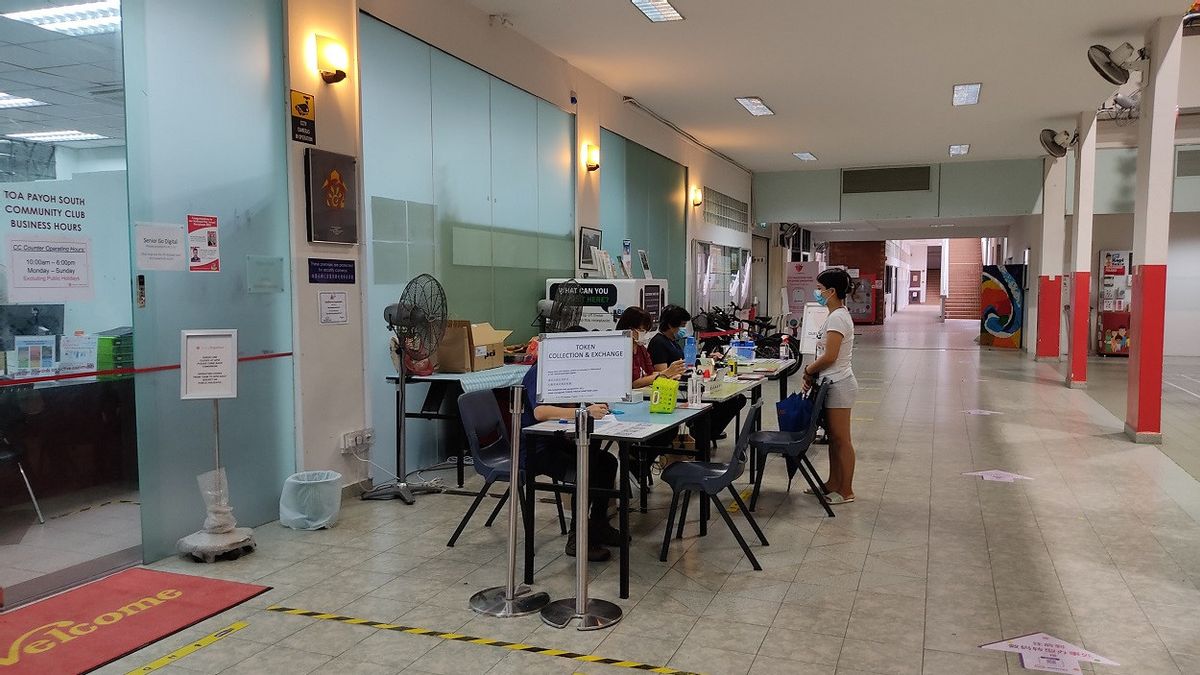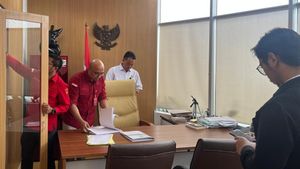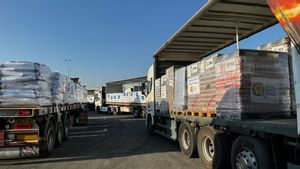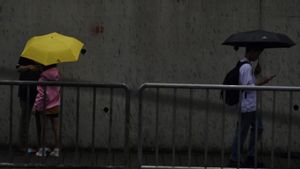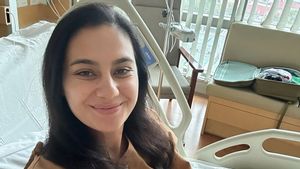JAKARTA - Health experts believe there is little need to impose restrictions, when a wave of COVID-19 Omicron subvariants hit Singapore, but believe it will be able to get through the current situation.
Health Minister Ong Ye Kung last weekend said a wave of Omicron XXB COVID-19 subvariant infections was likely to peak around mid-November.
Cases like that have increased in Singapore over the past month, but so far, the outbreak has not triggered more severe disease than the previous variant.
Minister Ong said the Ministry of Health (MOH) was monitoring the situation closely. "It does not rule out reimposing safe management measures such as wearing masks, but will try "the best" not to interfere with normal life," he said, launching CNA Oct. 19.
Visitors' safety management measures in all hospital and nursing wards in Singapore have been tightened to November 10 as community cases increase.
President of the Asia Pacific Microbiological Society and Clinical Infection, Paul Tambyah, said there was no evidence that the current XBB wave caused a significant increase in deaths or severe illness.
"The main impact is in terms of extension of the MC (medical certificate), as well as hospitalization for individuals who have mild illness but (have) a risk factor identified during the previous wave related to complications," he explained to CNA.
Most of the patients Dr. Tambyah has met in recent days, including some 90-year-old patients, are in good health, but their family members are "very anxious and have asked for closer monitoring".
"While the number of cases has increased significantly, the number of ICU cases and deaths has not increased simultaneously, it remains the same as in early August when there were far fewer cases overall," he added, citing a graph on the Health Ministry's website.
Meanwhile, Associate Professor Alex Cook and Associate Professor Shou Yiyun of Saw Swee Hock School of Public Health at National University Singapore said it was important to note that most of the population may have been infected, as not all positive cases were reported to the Ministry of Health.
"First, this gives individuals who have been infected and vaccinated with 'hybrid immunity'," they said.
"While reinfection is now becoming increasingly common, and partly contributing to the spike in cases, the severity of most cases is less than previously infected in the pandemic, in the early waves and even compared to recent Omicron waves."
This can be seen in the statistics of ICU and COVID-19 deaths.
"Before the wave about a month ago, we looked at about 10 cases a day in intensive care, when an average of about 2,100 new infections were reported daily. This has grown, slightly, to 15, on Monday when about 8,500 new infections were reported," Cook said.
"The state is preparing, at the start of the pandemic, intensive care beds for several hundred patients, so this is well below the maximum capacity."
Today, about two people die from COVID-19 every day, which is "a lot less" than during the Delta wave a year ago, Shou said.
At that time, with an average of seven days, about 13 people died a day at its peak, where the number of new daily cases was less than 3,800, he added.
The previous two Omicron waves recorded about 11 deaths a day, respectively, when the number of new daily cases was around 18,000 and six deaths a day where there were about 11,000 new daily cases, Shou said.
"Two deaths a day during this wave may sound like a high number, but this is comparable to the number of deaths from influenza in the normal days before the pandemic," he said.
"The number of smaller people in the ICU or died from COVID-19, compared to the previous wave was in line with what we expected, when more infections had hybrid immunity from infection and previous vaccinations."
Both Cook and Shou thought, there would be no more wave of infections. "Most of us have been infected, (so) the virus runs out of people to infect for the first time, which limits epidemic growth," they explained.
"MoH issues weekly growth rates in the number of cases. This shows how large the acceleration or slowdown of the epidemic is, much more pronounced than seeing the number of new daily cases, which is soaring day by day."
Both experts show that based on data, the wave stops accelerating more than a week ago, growing but slower.
"The weekly growth rate extrapolation tells us to expect the peak of the wave to occur soon, and growth in severe cases will also peak within a week or so after," explained Cook and Shou.
While more severe cases or deaths are expected to occur, these numbers will be "lower than the previous wave and from the magnitude that the health care system can absorb", they said.
"Of the four major community waves, excluding the 2020 wave which is mostly limited to migrant worker dormitories, it forms the lightest, though not the smallest."
So, do you need to re-impose restrictions? Professor Dale Fisher, senior consultant at the Infectious Diseases Division at National University Hospital, said he had confidence in the authorities to make decisions guided by science very important,
Menghapus pembatasan "selalu datang dengan ketentuan bahwa ini dapat dibalikkan sebagai respons terhadap ancaman penyakit menular," kata ahli yang juga merupakan bagian dari komite Network Peringatan dan Respons Wabah Global WHO ini.
"The public needs to believe, the government and its independent experts comply with science, with the best knowledge available. This is complex following the mountains of science and data, and the public must have confidence in how that information is managed. "Of course, the authorities need to get that trust," he said.
"This relationship between authority and the public is behind Singapore's success to date," he added.
Meanwhile, Dr. Tambyah highlighted that the lifting of the mask mandate did not affect the number of infections. "I really hope the government does not return the mask mandate. We know the fact that the lifting of the mask mandate does not have an impact on the number of cases," he said.
"The case remains low for a month after the lifting of the mask mandate towards the end of August, in other words, more than seven incubation periods. So it is highly unlikely that restoring the mask mandate will have a complete impact on the total number of cases or the low rate of ICU cases," he said.
Cook and Shou added, as the health care system has gone through three major waves of Omicron, with fewer community restrictions successively, "disputable to reimpose large-scale behavioral restrictions to reduce transmission" could be a "step back." This reflects on the collective response in the initial mass of the pandemic.
"The evidence in recent weeks shows that XBB is not a variant that changes the game," they said.
"However, researchers will continue to monitor such risks, through international collaboration, sustainable virus sequencing, and epidemiological analysis of the severity of cases in our hospitals."
"We have to be prepared that one day, we may need to reinstall TraceTogether and remove masks from storage. But we don't need to be afraid of any new waves," they said.
Asked if the 1-2-3 protocol that has been Singapore's strategy to live with COVID-19 since April was sufficient, Prof. Fisher said it was an "easy pragmatic guide" and "very appropriate to manage our circumstances." Clearly very important message and consistent guide."
However, "it is always possible to adjust the guidelines, especially if things change, to protect the more vulnerable," he added.
On the other hand, Dr. Tambyah pointed out that while this protocol is sufficient, it may be slightly improved to reduce the impact of a large number of mild cases.
The English, Chinese, Japanese, Arabic, and French versions are automatically generated by the AI. So there may still be inaccuracies in translating, please always see Indonesian as our main language. (system supported by DigitalSiber.id)
